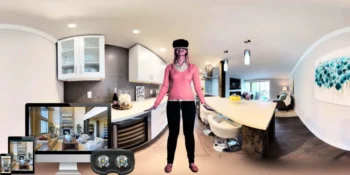Technology has revolutionized how we work in the digital age, bringing both convenience and challenges. While it has made remote work and communication more accessible, it has also blurred the lines between our professional and personal lives. Achieving work-life balance is essential for our well-being and productivity.
Guide to Achieve Work-Life Balance
This guide will explore strategies for maintaining equilibrium in the digital age. Some essential factors to achieving work-life balance are discussed below.
Self-Assessment
Before exploring strategies for work-life balance, assess your current situation. Consider your work habits, daily routines, and how technology influences your life. Are you constantly connected to your devices? Do you struggle to disconnect from work outside office hours? Identifying these patterns is crucial for creating a balanced life.
Self-assessment involves deep introspection. Consider keeping a record of your thoughts, feelings, and daily activities. This process will help you gain insight into your work-life balance challenges, such as identifying triggers that cause work-related stress or moments when you feel most disconnected from your personal life.
Define Your Boundaries
Establish clear boundaries between work and personal life. Set specific working hours and communicate them to your colleagues and supervisors. Ensure that you have designated spaces for work and relaxation, even if you work from home. Creating physical and temporal boundaries is the foundation of work-life balance.
When defining boundaries, be assertive in communicating your needs to your employer and coworkers. Emphasize the importance of these boundaries in maintaining your well-being and effectiveness at work. At home, create a dedicated workspace that separates you from household distractions, helping you focus during work hours and mentally detach when it’s time to relax.
Prioritize Tasks
Prioritization is key to effectively balancing your responsibilities. Use task management apps or tools to organize your to-do list. Identify the critical tasks and tackle them during your peak productivity hours. By focusing on high-priority items, you’ll work more efficiently and reduce the need to bring work home.
Prioritization is about distinguishing between what’s urgent and what’s important. Start by categorizing your tasks into four quadrants: urgent and important, not urgent but important, urgent but not important, and neither urgent nor important. Focus your energy on the tasks in the first two categories, as they contribute most to your productivity and overall well-being.
Embrace Technology Mindfully
While technology can be a double-edged sword, it can also be a powerful ally in achieving work-life balance. Use productivity apps to streamline work, automate repetitive tasks, and track time. However, be mindful not to let technology become a constant distraction. Practice digital detox by scheduling device-free periods to recharge.
Embracing technology involves being intentional about your digital choices. Consider using time management apps that block distracting websites during work hours or limit your daily screen time. Implement rules for phone usage, such as silencing notifications during family meals or designating screen-free zones in your home to foster quality time with loved ones.
Set Digital Boundaries
Establish boundaries for your digital interactions. Turn off non-essential notifications during your time to minimize distractions. Encourage colleagues and clients to respect your working hours and avoid checking work emails or messages outside those hours unless necessary.
Setting digital boundaries may require assertiveness and clear communication with colleagues. Inform them of your off-hours and emergency contact protocols, assuring them that you’ll promptly address urgent matters when you’re back in the office. By respecting your time, you set the precedent for others to do the same.
Take Regular Breaks
Regular breaks are important in maintaining focus and reducing stress. Schedule short breaks throughout the workday to stretch, breathe, and clear your mind. These moments of relaxation can boost productivity and help prevent burnout.
Regular breaks are not a sign of laziness but a smart productivity strategy. Use techniques like the Pomodoro Technique, which involves working for 25 minutes and then taking a 5-minute break. During breaks, engage in activities that rejuvenate your mind, such as a quick walk, deep breathing exercises, or simply closing your eyes and resting.
Utilize Remote Work Flexibility
If you can work remotely, use it to your advantage. Remote work offers the freedom to design your workspace and schedule in a way that suits your needs. However, it’s essential to set boundaries to avoid overworking. Create a dedicated workspace and establish specific working hours like in a traditional office.
Remote work can provide a better work-life balance, but it requires discipline. Designate a quiet, organized workspace where you can focus without distractions. Set clear start and end times for your workday, and communicate these hours to your family to minimize interruptions. Use virtual tools like video conferencing and collaboration platforms to communicate effectively with your team.
Invest in Time Management
Effective time management is an excellent skill for achieving work-life balance. Use time-tracking apps to monitor how you spend your time. Identify areas where you can optimize workflow and eliminate time-wasting activities. By making the most of your work hours, you can free up more time for your personal life.
Time management tools help you identify patterns in your work habits and productivity. Review the data regularly to assess your performance and identify areas for improvement. Experiment with techniques like time blocking, where you allocate specific blocks of time to certain tasks, to enhance your productivity and time allocation.
Communicate Openly
Communication is key, both at work and in your personal life. Discuss your work commitments and personal needs with your employer, colleagues, and family. Discuss any challenges you face in maintaining balance, and seek support or accommodations when necessary.
Effective communication involves expressing your needs and concerns clearly and empathetically. When discussing your work-life balance with your employer, please provide specific examples of how it impacts your well-being and job performance. Encourage open dialogue to find collaborative solutions that benefit you and your organization.
Practice Self-Care
Prioritize self-care to maintain your physical and mental well-being. Make time for activities that bring you joy and relaxation, such as exercise, hobbies, or spending quality time with loved ones. Self-care not only rejuvenates you but also enhances your overall productivity and happiness.
Self-care is not an indulgence; it’s a necessity. Schedule regular self-care activities into daily or weekly routine. These include meditation, yoga, journaling, or engaging in creative pursuits. By caring for physical and emotional health, you’ll be better equipped to handle work and personal life demands.
Learn to Say No
Sometimes, achieving work-life balance means saying no to additional commitments. Be selective about extra tasks or projects at work and in your personal life. Saying no when already stretched thin is a sign of self-awareness and a crucial step toward balance.
Learning to say no requires assertiveness and self-awareness. Politely decline requests or invitations, explaining that you must prioritize existing commitments or your well-being. Recognize that saying no allows you to honor your boundaries and maintain a healthier work-life balance.
Regularly Evaluate and Adjust
Work-life balance is not a one-time achievement but an ongoing process. Regularly evaluate your balance, reassess your priorities, and adjust as needed. Life is dynamic, and your needs may change over time. Be flexible in adapting your strategies to maintain equilibrium.
Regular evaluation involves reflecting on your progress and adjusting your strategies accordingly. Set aside time periodically—perhaps monthly or quarterly—to assess how well you’ve maintained your work-life balance. Consider seeking feedback from trusted friends, family members, or mentors to gain outside perspectives and make informed adjustments.
Conclusion
In the digital age, achieving work-life balance is both a challenge and a necessity. By following this guide, you can take proactive steps to create a balanced life that allows you to excel in your career while also enjoying your time. Remember that work-life balance is a journey, not a destination. Continuously evaluate your progress and make adjustments to ensure that your digital-age lifestyle promotes well-being, productivity, and happiness.










